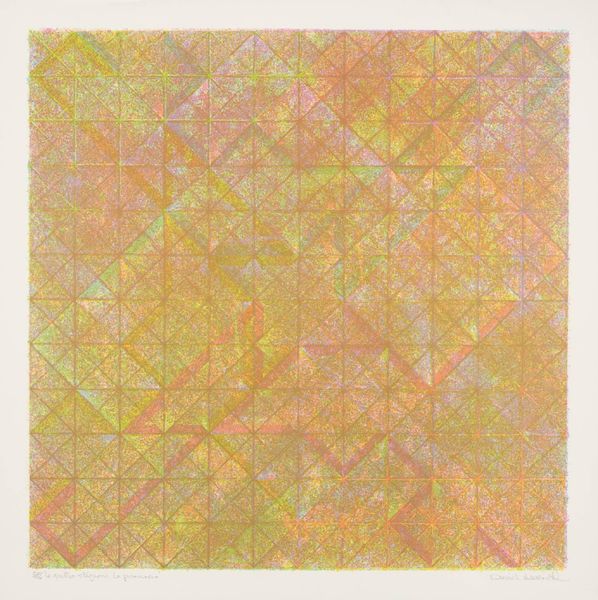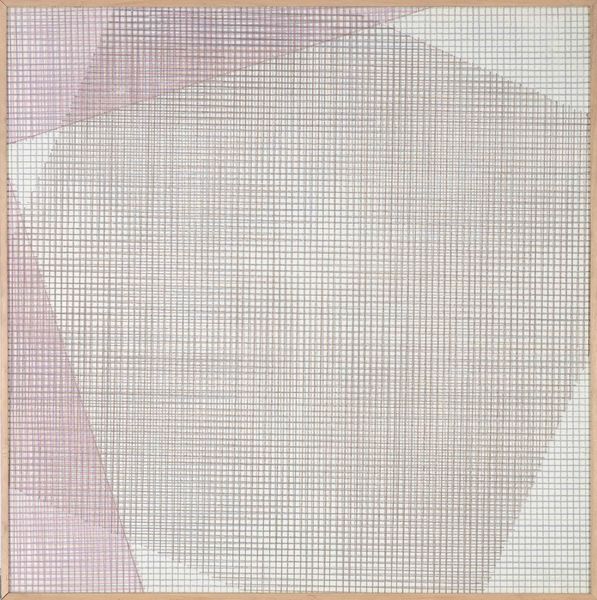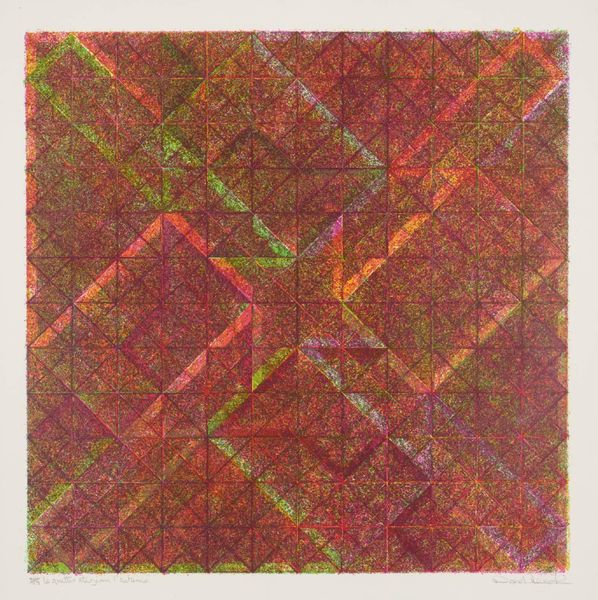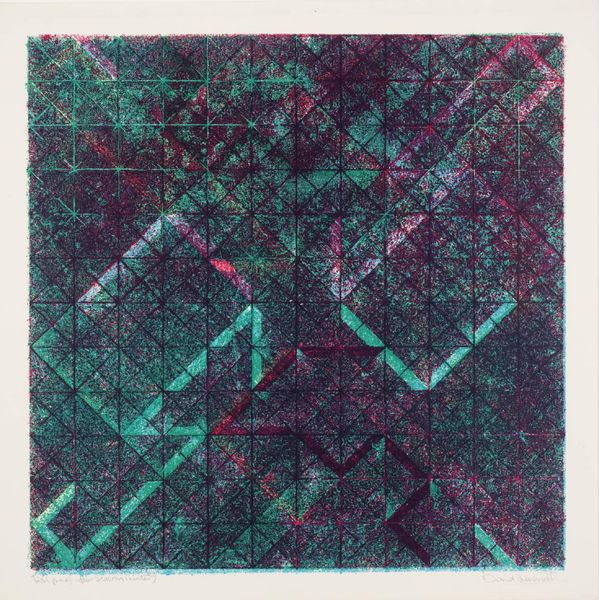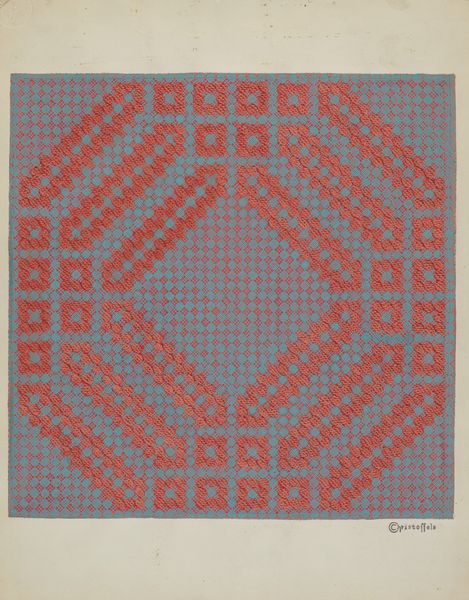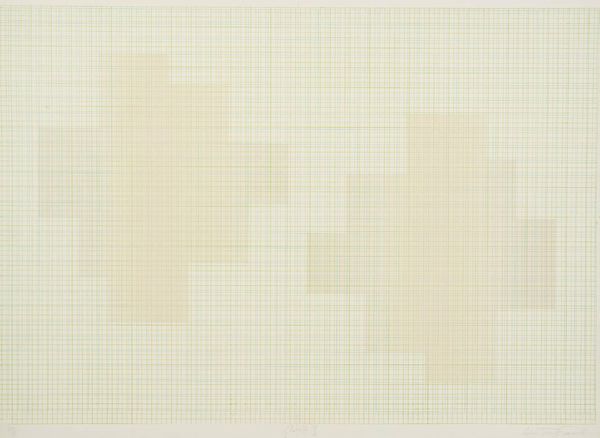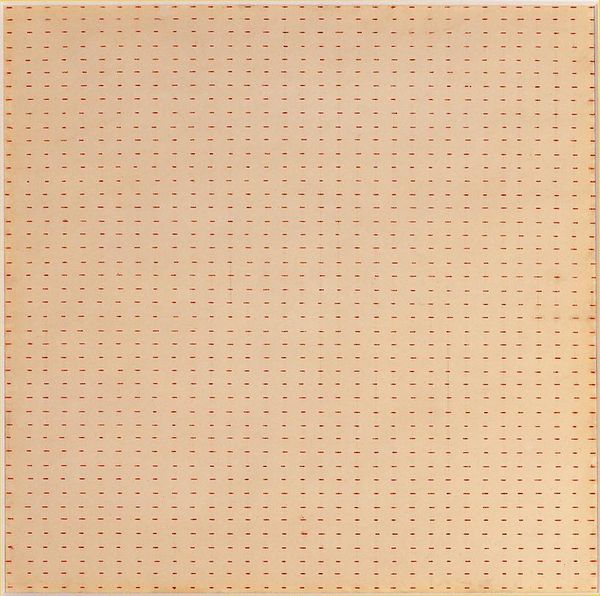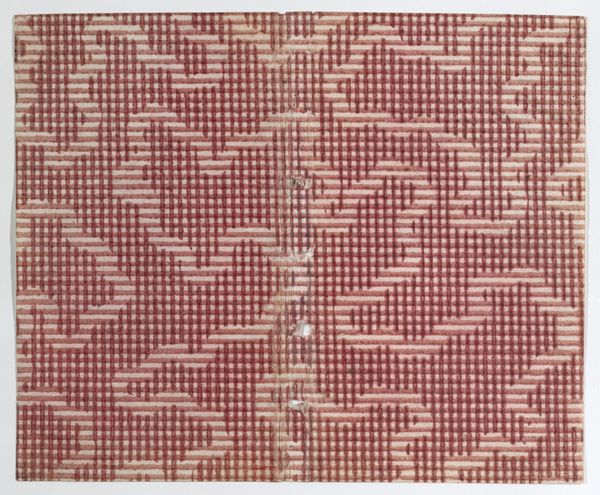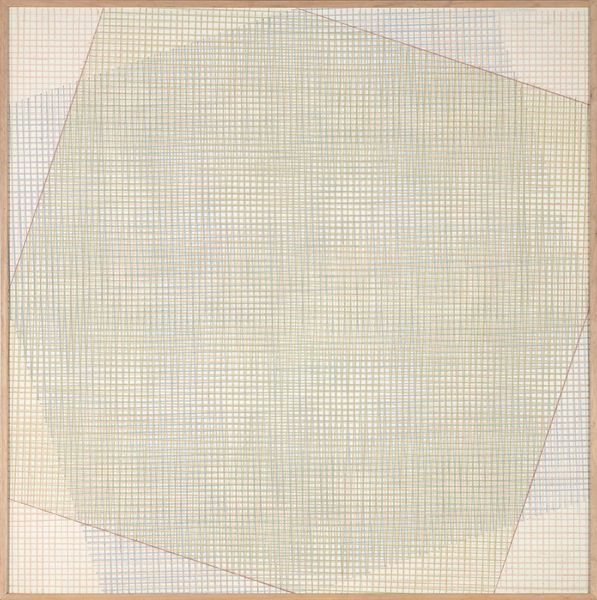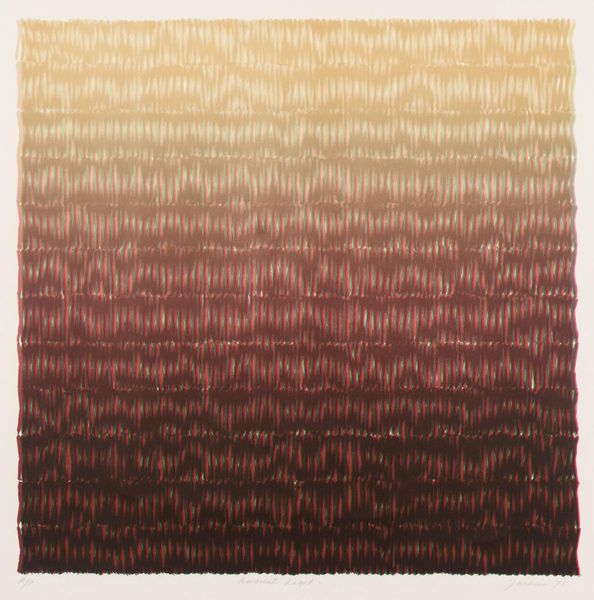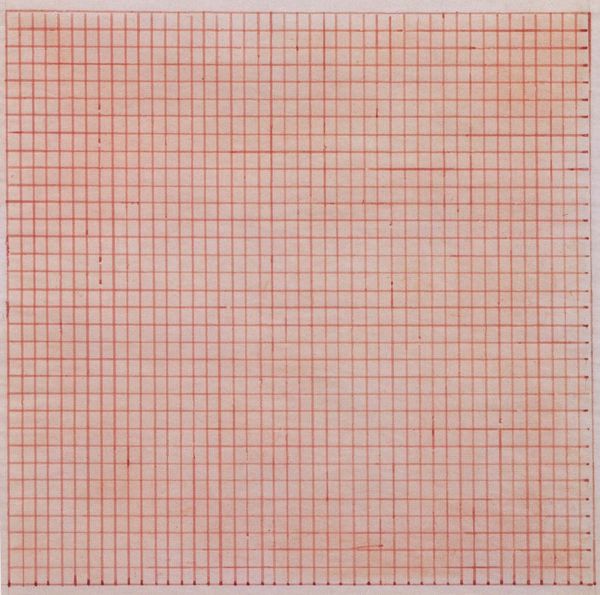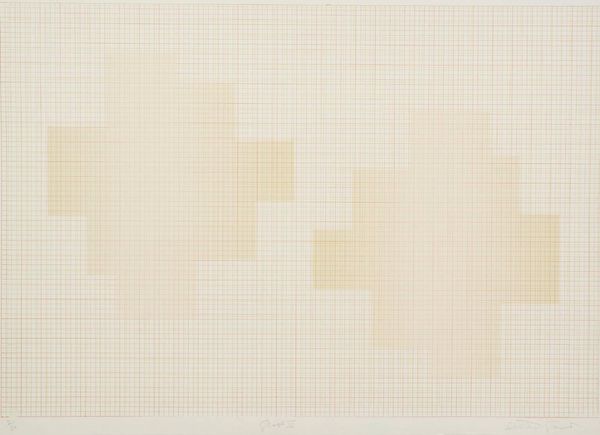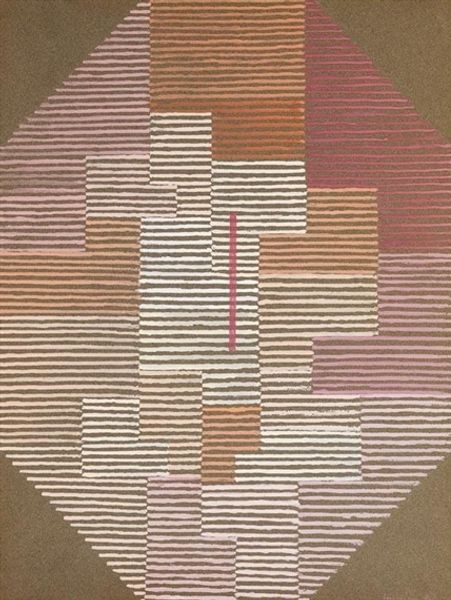
painting, acrylic-paint
#
painting
#
acrylic-paint
#
geometric
#
geometric-abstraction
#
abstraction
Copyright: Charles Bezie,Fair Use
Curator: The artwork is "Désert," painted in 1976 by Charles Bezie, using acrylic. The texture is intriguing, with these densely packed geometric shapes. How do you respond to this pattern? Editor: It feels repetitive, almost hypnotic. There’s this overall neutral field that has me a bit lost in thought... I guess it reminds me a bit of some indigenous art patterns but maybe that is wrong. How do you interpret this work? Curator: Considering its context within the Pattern and Decoration movement, and knowing the title, I view "Désert" as a subtle critique of the masculine-dominated, minimalist art world. Its systematic design embraces repetition and ornament often delegitimized as feminine or craft, thus excluded from ‘high art.’ Does knowing this change how you see the systematic patterning? Editor: Absolutely, it adds a layer of political meaning to what seemed like a purely aesthetic choice. Seeing it as resistance transforms the repetition; it's no longer empty, but declarative. The 'feminine' aspect, almost dares you to accept or ignore it. Curator: Precisely. And note the choice of medium, acrylics—embracing synthetic materials, contrasting the supposed 'purity' of oil paints traditionally favored. How does that affect the statement the work makes? Editor: So, in a way, the artist uses accessible, 'everyday' materials to make this statement of identity... It challenges established art conventions, and asks why we assign value to one type of expression, like geometric patterns or the chosen acrylic paints over more 'pure' art such as landscape oil paintings, while marginalizing others. Curator: Precisely, and by reclaiming decorative elements as powerful tools, Bezie highlights the intersection of art, identity, and the inherent biases within the art establishment itself. It allows us to have a discourse about not only this piece but many works that challenge historical context. Editor: It is pretty cool how historical context shifts the meaning behind patterns and the power behind that expression. Thank you!
Comments
No comments
Be the first to comment and join the conversation on the ultimate creative platform.
